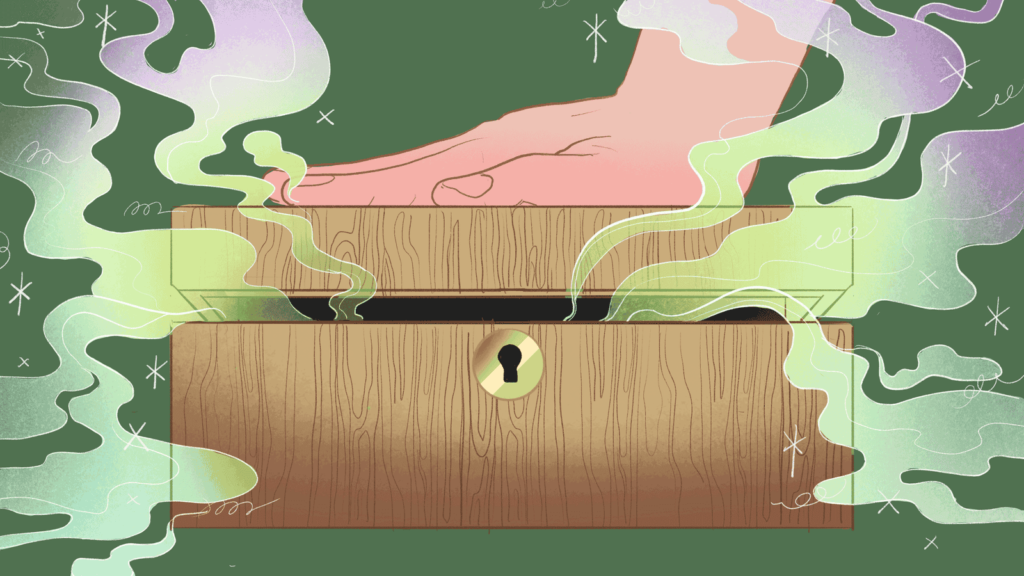Increasingly permissive laws for cannabis consumption may have found you partaking much more frequently—even daily—but there are pitfalls to habitual use. One of the least serious but most annoying for you (and your wallet) is the fact that the more you use weed (whether you’re smoking it, vaping it, or eating it), the more you’ll need to use to experience the same effects. If you’ve noticed this happening to you, it might be time for a tolerance break.
Heavy users of cannabis can often experience diminished intoxication after months or years of consistent use, owing to the complex nature of the endocannabinoid system (ECS). While people usually think of THC and CBD as the intoxicating elements of weed, there are dozens of other cannabinoids in most non-isolate cannabis products, each of which interacts with the ECS in ways we don’t fully understand. While we lack a standard scientific explanation for how a high tolerance to cannabis develops, finding the “high you once had” is referred to by Redditors as “chasing the dragon,” and a tolerance break—a temporary but total abstention from cannabis use—might be the best way to catch it.
There can also be negative physical consequences to heavy cannabis use. Though rare, Cannabis Use Disorder and Cannabis Hyperemesis Syndrome are potential outcomes that might require you to take a break for reasons more serious that wanting to feel a little more stoned.
But how do you know when you need a “T-break,” and how long should it be?
The science behind taking a tolerance break
Taking a break from weed is usually something people do naturally, especially recreational-only folks—work or life get in the way, and pretty soon it has been weeks or months since the last time they lit up. Heavy or habitual users have a harder time facing down the T-break, but Peter Grinspoon, a doctor and the author of forthcoming book Seeing Through the Smoke: A Cannabis Specialist Untangles the Truth About Marijuana, thinks it’s something worth considering.
Grinspoon, who is an instructor of medicine and a cannabis specialist at the Harvard School of Medicine, recommends periodic cannabis abstention to folks who want to reset their tolerance levels. “When you use cannabis heavily and daily,” he said via email, “[the] natural cannabinoid receptors in your brain ‘downregulate’ and become more scarce.”
The good news: Other than some ground-level discomfort, cannabis is not chemically addictive. The bad news: A weed “detox” can cause some noticeable, albeit temporary, changes for those used to a regular supply of external cannabinoids. “For some people, [a T-break] can be mild and manageable, nothing at all like opioid withdrawal,” Grinspoon said. “For others, it is quite uncomfortable, [and] interferes with mood, sleep, and appetite.”
That’s because, he explained, “when you stop using cannabis, your natural endocannabinoids have fewer receptors to work with, which is why you feel grumpy and have trouble eating and sleeping. A tolerance break, even just two weeks duration, allows these receptors to restore themselves, so your brain can function healthily without the supplemental THC.”
How long should a weed tolerance break last?
Even if you think a tolerance break is a good idea, you may be worried about pausing cannabis use for too long if you rely on it for wellness or medical needs. On that count, you have some flexibility: The duration and “rules” of a T-break are up to you, according to cannabis educator Danielle Olivarez, founder of Highlites Oasis, a community for mindful cannabis consumption and education.
“T-breaks are personal,” Olivarez said. “[It] could be 30 days or three, it’s up to you and your needs and goals. Everyone’s reason for taking one is [personal], and in my experience, [it will be] most appreciated when you understand your own ‘why’.”
If your “why” is about waiting until all traces of cannabis have completely left your body, here’s the science on that: According to Healthline, cannabis is detectible in the body for up to 30 days for occasional users—but for heavy users, that time period can stretch to several months. So what does that mean for your T-break? According to the University of Vermont, if you use regularly, you should abstain for at least 21 days.
Tips for a successful tolerance break
T-breaks can be tough, but members of the cannabis community have some tips to help you make it to the finish line.
To distract yourself from your cravings, Oliviarez recommends keeping busy. “Reconnect with old hobbies or activities [that] you love to do, but you never give yourself time to do,” she said, adding that exercise, breathwork, and meditation are also great ways to channel your nervous energy.
If you need even more techniques to prolong your tolerance break, the University of Vermont has created a wellness guide with the following tips:
Stay busy to keep your mind off of the fact that you aren’t using.
Develop a consistent sleep routine if you used cannabis to help you fall asleep.
Schedule your meals if you used cannabis to stimulate your appetite.
Distract yourself when you feel cravings by remaining physically active.
Celebrate your wins—even if your break isn’t as long as you hoped it would be.
Check out the complete guide, linked above, for more helpful advice about mindfulness and dealing with the emotional fallout of a T-break, from restlessness, to loneliness, to anxiety.
Avoid developing high tolerance in the first place
If you really love your nightly toke or gummy and never want to have to face a T-break, or you are a medical user and rely on cannabis for health reasons, there are ways to avoid developing a high tolerance in the first place.
According to Dr.Grinspoon, consistently avoiding overconsumption is a big start. “Taper down your usage somewhat, and over time you might get some of the effect [of THC] back [without taking a break],” he said. “Bombarding your increasingly scarce cannabinoid receptors with ever more THC is a rabbit hole to be avoided.”
H/T: lifehacker.com



